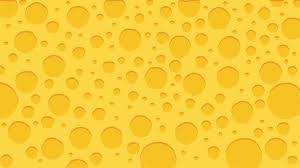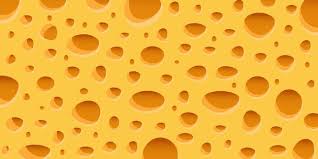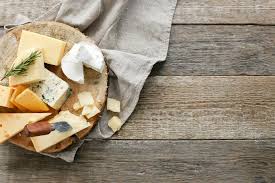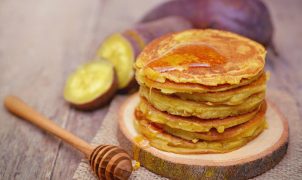Contents
Cheese Texture is one of the most versatile and beloved foods globally, with a vast array of textures that contribute significantly to its appeal. From soft and creamy to firm and crumbly, the texture of cheese plays a pivotal role in its culinary applications and sensory experience. Understanding cheese texture involves exploring the science behind it, the factors that influence it, and the various types of cheese textures available.
Factors Influencing Cheese Texture

The texture of cheese is determined by several factors, ranging from its production process to the type of milk used. Here are some key influences:
- Type of Milk: The milk used to make cheese—cow, goat, sheep, or buffalo—affects its texture. Cow’s milk tends to produce creamy cheeses, while goat’s milk often results in a firmer, crumbly texture. The fat and protein content in the milk also play a crucial role.
- Cheesemaking Process: The techniques employed during cheesemaking, such as the curd cutting size, temperature, and stirring, directly impact the final texture. Larger curd cuts often lead to softer cheeses, while smaller cuts result in firmer textures.
- Aging: Aging or ripening significantly alters cheese texture. Fresh cheeses like ricotta are soft and moist, while aged cheeses like Parmesan become hard and crumbly over time as moisture evaporates and proteins crystallize.
- Moisture Content: The amount of water retained in the cheese determines whether it is soft, semi-soft, or hard. High-moisture cheeses are softer, while low-moisture varieties are firmer.
- Cultures and Rennet: The bacterial cultures and enzymes used during production influence the cheese’s texture. Cultures affect acidity, while rennet helps curdle the milk, both contributing to the cheese’s consistency.
Exploring Cheese Textures
 Cheese textures can be broadly categorized into a few main types, each with its unique characteristics and uses.
Cheese textures can be broadly categorized into a few main types, each with its unique characteristics and uses.
Soft and Spreadable Cheeses
Soft cheeses, like Brie and Camembert, are known for their creamy and luscious textures. These cheeses are high in moisture, making them ideal for spreading on bread or crackers. The soft rind adds a slightly firm exterior, contrasting with the gooey interior. Soft cheeses are best enjoyed fresh and are often paired with fruits or wine.
Semi-Soft Cheeses
Semi-soft cheeses like Gouda, Havarti, and Monterey Jack are slightly firmer but still retain a smooth and pliable texture. These cheeses melt beautifully, making them a favorite for cooking and grilling. Their mild flavor and creamy consistency make them versatile for various dishes.
Firm and Hard Cheeses
Firm cheeses, such as Cheddar and Gruyère, strike a balance between moisture and aging. They are dense yet easy to slice, making them popular for sandwiches, salads, and charcuterie boards. Hard cheeses, like Parmesan and Pecorino Romano, are aged longer, resulting in a dry, crumbly texture perfect for grating over pasta or soups.
Crumbly Cheeses
Cheeses like Feta and Blue cheese fall into the crumbly category. These cheeses have a distinct, brittle texture that crumbles easily when sliced. Their bold flavors and unique textures make them excellent additions to salads, pizzas, and dips.
Stretchy Cheeses
Mozzarella and Provolone are renowned for their stretchy texture, particularly when melted. The stretchiness comes from the cheese’s unique protein structure, which aligns during production. These cheeses are essential for pizzas, lasagnas, and other baked dishes requiring a satisfying cheese pull.
Bloomy and Washed Rind Cheeses
Bloomy rind cheeses, like Brie, have a soft, white rind that develops during aging, giving them a velvety texture. Washed rind cheeses, such as Taleggio, have a slightly sticky texture due to their rind being washed with brine or alcohol during aging. These cheeses are known for their robust flavors and creamy interiors.
The Science Behind Cheese Texture

Cheese texture is a result of complex chemical and physical mancingduit processes during its production and aging. Here are some scientific aspects that contribute to the final texture:
- Protein Structure: During cheesemaking, casein proteins in milk form a network that traps fat and moisture. The density and arrangement of this network determine the cheese’s texture.
- Fat Content: Fat adds creaminess to cheese. Higher fat levels result in softer, richer textures, while lower fat cheeses tend to be firmer.
- Moisture and Salt: Moisture levels influence the softness of cheese, while salt affects its firmness and helps preserve it during aging. Salt also interacts with proteins, enhancing the cheese’s structure.
- Crystallization: In aged cheeses, calcium lactate crystals form, giving the cheese a gritty or crunchy texture. These crystals are a hallmark of well-aged cheeses like Parmesan.
Pairing Cheese Texture with Culinary Applications
Understanding cheese texture allows for better culinary pairings and applications. Here are some examples:
- Soft Cheeses: Perfect for spreading on crackers or pairing with sweet fruits like figs and honey.
- Semi-Soft Cheeses: Ideal for melting in sandwiches, quesadillas, or fondues.
- Firm Cheeses: Great for slicing and adding to burgers, charcuterie boards, or as a snack with wine.
- Hard Cheeses: Best for grating over pasta, soups, or risottos.
- Crumbly Cheeses: Excellent for sprinkling on salads, pizzas, or as a topping for roasted vegetables.
- Stretchy Cheeses: Essential for dishes like pizza, baked ziti, or mozzarella sticks.
How to Store Cheese for Optimal Texture
Proper storage is essential to maintain the texture and quality of cheese. Here are some tips:
- Temperature: Store cheese in the refrigerator at a consistent temperature, ideally in the cheese drawer or a slightly warmer section.
- Wrapping: Wrap cheese in wax paper or parchment paper to allow it to breathe while preventing excessive moisture loss.
- Avoid Freezing: Freezing cheese can alter its texture, making it crumbly and less appealing.
- Keep Separately: Store strong-smelling cheeses separately to avoid flavor transfer to milder varieties.
Conclusion
Cheese texture is a fundamental aspect of its appeal, offering a diverse range of culinary possibilities. From the creamy softness of Brie to the crumbly sharpness of Feta, each texture brings its unique charm to the table. By understanding the factors that influence cheese texture and its various categories, you can better appreciate the artistry behind cheesemaking and enhance your culinary creations. Whether you’re savoring a gooey mozzarella pizza or enjoying a sharp Parmesan topping, the texture of cheese always plays a starring role.





